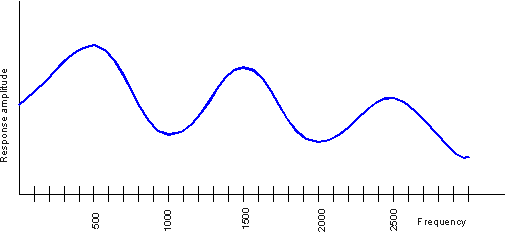
Objects have frequencies that they prefer to vibrate at. If you try to vibrate it at a different frequency, the vibrations will be dampened and eventually die out. If you try to vibrate it at its preferred frequency, the vibrations will be reinforced and the object will resonate.
Some examples of resonance:
If you try to make an object vibrate at twice its favourite resonating frequency, it will not respond very well. If you try to make it vibrate at three times its favourite resonating frequency, it will again resonate -- though not as much as at the lower resonating frequency. This pattern repeats -- every odd multiple of the lowest frequency will be an effective resonanting frequency:
multiple of favourite frequency |
resonance? |
1 x |
yes |
2 x |
no |
3 x |
yes |
4 x |
no |
5 x |
yes |
For a half-open tube that is 17 cm long (a typical length for an adult male's vocal tract), the preferred frequencies are 500 Hz, 1500 Hz, 2500 Hz, 3500 Hz, and so on.
We often diagram the frequency response curve of a tube. This shows for each frequency how much a tube would resonate if you gave it vibrations at that frequency. The frequency response curve for a 17 cm long vocal tract held in neutral position (i.e., the position for schwa) looks like:
